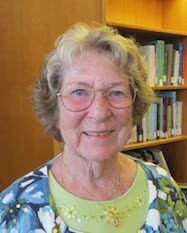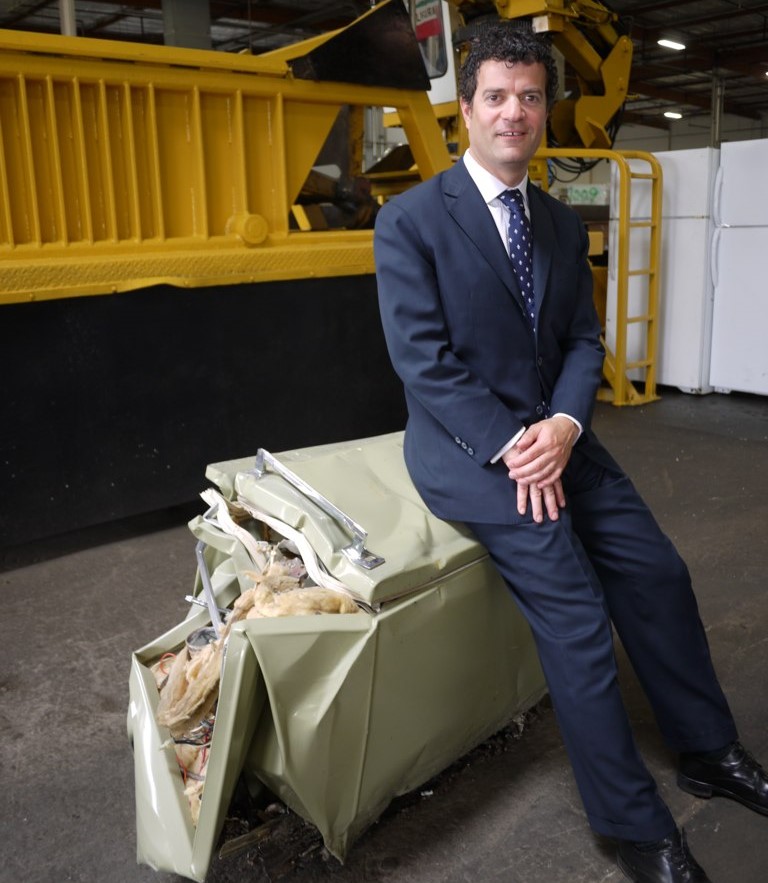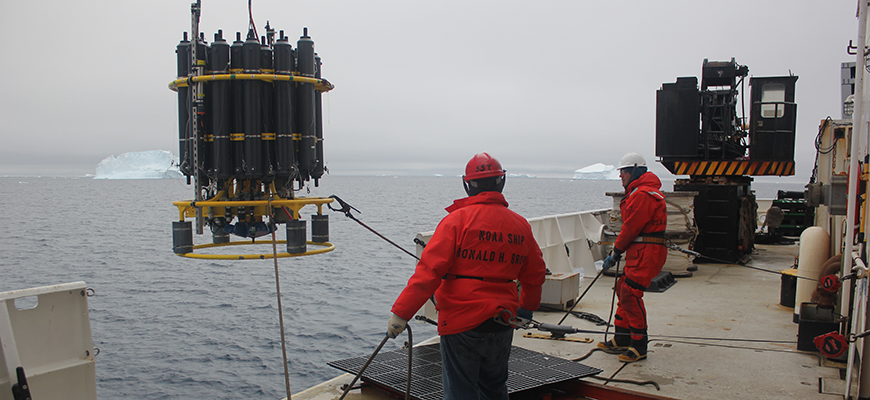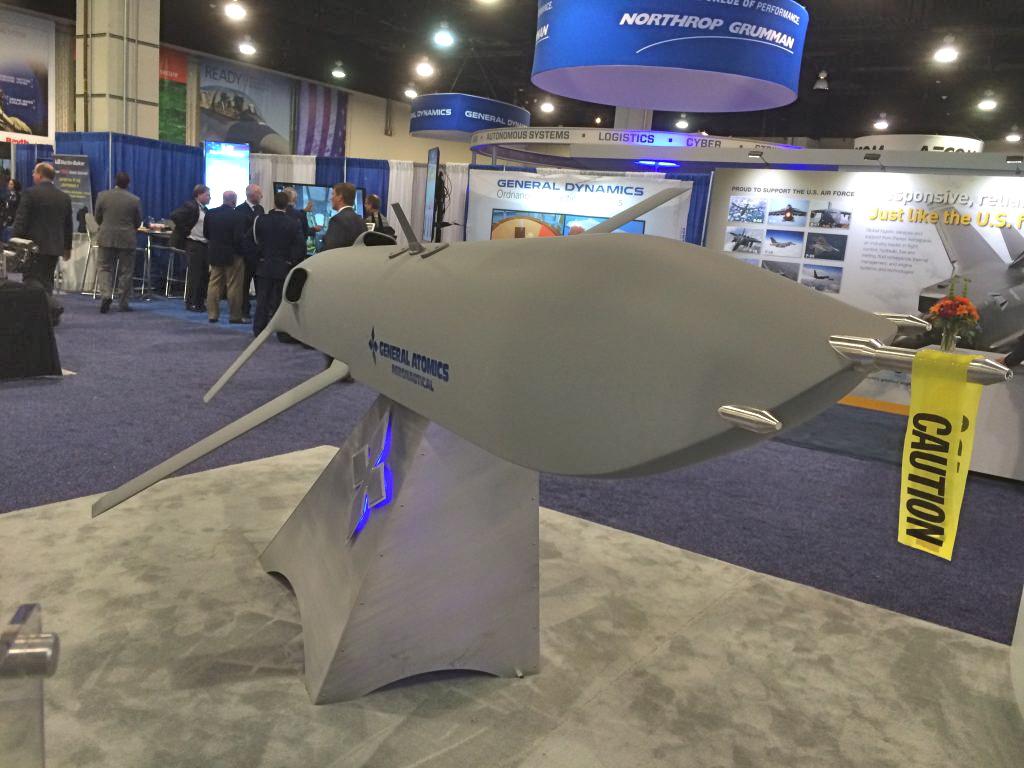Daily Business Report-March 8, 2019
Crew of NOAA Ship Ronald M. Brown deploy a CTD, an instrument that collects ocean temperature and other data. (Courtesy of Scripps Institution of Oceanography)
Research Highlight
Deep ocean warming at an accelerating rate
Scientists at Scripps Institution of Oceanography and NOAA who analyzed data from deep-diving ocean robots and research cruises say that the coldest, near-bottom South Pacific waters originating from Antarctica are warming three times faster than they were in the 1990s.
The researchers released their findings in two studies recently published online. One study led by Scripps oceanographer Sarah Purkey in the Journal of Geophysical Research compared temperature readings at depths greater than 4,000 meters (13,000 feet) made from ships between the 1990s and 2010s. The other study in the journal Geophysical Research Letters reported on data collected by 31 Deep SOLO floats in the South Pacific Ocean between 2014 and 2018. Deep SOLO floats are autonomous spherical instrument packages manufactured at Scripps that are able to descend to ocean depths up to 6,000 meters (20,000 feet) collecting information on temperature, salinity, and current strength.
The ship-based data show that deep ocean temperatures rose an average rate of 1 thousandth of a degree Celsius per year between the 1990s and the 2000s, and that rate doubled between the 2000s and the 2010s. The Deep SOLO floats reveal a tripling of the warming rate since the 1990s over the past four-plus years.
“We’ve been monitoring the deep ocean for a few decades, but this is the first time we have enough data to say that its warming rate has accelerated,” said Purkey.
Scientists had already known that the oceans are taking up about 90 percent of the excess heat energy being added to Earth’s climate system by fossil fuel use and other human activities. About 10 percent of that heat is circulated to deep oceans. Purkey said she and colleagues were surprised at the amount of warming taking place at depths so far removed from the atmosphere.
As ocean waters warm, they expand, contributing to rising seas.
“Measuring the warming occurring in these deep ocean waters helps us understand one of the drivers of sea-level rise and will help to improve predictions of future sea level,” said Gregory C. Johnson, a NOAA oceanographer and an author of both papers.
Both studies were supported by NOAA. Purkey’s research was also partially supported by the National Science Foundation supported Global Ocean Ship-Based Hydrographic Investigations Program (GO-SHIP).
____________________
Former Councilwoman Judy McCarty
passes away after long illness

Former San Diego City Councilwoman Judy McCarty died Monday, March 4, after an extended illness. Her health had been slowly declining over the last several months. She was with her family at her side.
McCarty, 78, represented District 7 on the San Diego City Council from 1985 to 2000.
“Judy was a mentor to me, like another mother. She taught me tenacity and to never accept ‘no’ as an answer. Judy’s legacy on the City Council was one of advocating for libraries, infrastructure and fiscal prudence. Perhaps her proudest achievement was her work on behalf of Mission Trails Regional Park,” said former Councilman Jim Madaffer,
who served as her chief of staff and succeeded her on the City Council in 2000.
“San Diego has lost one of the great ones,” said John Kern, who served as her first chief of staff. “Perpetually underestimated, she served four terms on the City Council, longer than anyone else since the City Charter was enacted in 1932. She was a tireless fighter for smart growth, neighborhoods, libraries and her great love – Mission Trails Regional Park. She will be long remembered in the hearts of those who knew her.”
McCarty got her start in politics serving on Navajo Community Planners. She was elected chair of the planning group. It was during this time she was hired by former State Assemblyman and Senator Larry Stirling as a district representative. In 1985, while serving on Stirling’s staff, she decided to run for a vacant seat on the City Council when then-Councilman and former Mayor Dick Murphy was appointed as a judge.
Born in Hammond, Ind., McCarty married Curtis McCarty in 1962 and together they have two children, Kate Mount of Denver and Dwight McCarty of Campbell, Calif.
Services are set for Saturday March 16, 2019 at San Carlos United Methodist Church at 11 a.m
____________________

Meet California’s new environment czar,
who walked the state to ‘reset’
By Julie Cart | CALmatters
What better way to decompress from a stressful federal government job than by trekking 2,600 miles on foot from Mexico to Canada?
That’s what Jared Blumenfeld, the new head of the California Environmental Protection Agency, did three years ago, setting out on the arduous and beloved Pacific Crest Trail that traces California’s searing deserts, rugged mountains and sparkling coastline. Turns out the dust on his boots afforded him just the perspective he needed to take on the job Gov. Gavin Newsom gave him in January.
“I had a healthy reset,” Blumenfeld said recently about his four months on the trail. “What you realize is the complexity of the environmental issues. We have so many people talking about environmental issues, but we say it in a way that most people don’t understand.” People want to be part of the solution to environmental problems, he said. “What I got from a distance was (the importance of) bringing these messages home in a way that’s digestible and actionable.”
Blumenfeld’s work perspective also shifted, from his job as the regional administrator for the federal EPA during the Obama administration to its mirror agency in Sacramento.
Blumenfeld, who has law degrees from the University of London and UC Berkeley, left his federal job in May 2016, a few months before his appointment was set to expire.
The agency he now manages oversees a half-dozen departments that regulate matters including air and water quality, which are among the state’s most contentious issues. Those issues have put California on a collision course with the Trump administration, which is undoing dozens of federal environmental protections, including some that originated in the Golden State.
Perhaps the most consequential battle is over Obama-era rules tightening future car emissions and gas-mileage standards to reduce greenhouse gases and other pollutants; the regulations were crafted by California but adopted nationwide. The federal government announced it would roll back those rules and revoke California’s right, first granted by Washington decades ago, to set its own air-pollution standards. Such a move would significantly affect the state’s ambitious climate policies.
Blumenfeld, 49, said the state needs the federal government as a partner on these issues, but when it came to hammering out a compromise on the auto standards, it was a one-way conversation. The feds announced last week that they had broken off negotiations with the state.
“They did not negotiate,” he said. “It was a little spurious to say they ended negotiations. They never began. The rule that was passed by the Obama administration has been rewritten based on very spurious and kind of junky science by the Trump administration.” (Federal officials produced research that they said showed the regulations as set would make cars less safe and be difficult for automakers to meet.)
____________________
Home sales in San Diego edged up in February
Sales of previously owned homes improved in February from a particularly slow January, according to housing statistics compiled through the San Diego Multiple Listing Service by the Greater San Diego Association of Realtors.
Single-family (detached) home sales rose more than 4 percent last month, while attached properties (condominiums and townhomes) experienced a healthy 14 percent increase in sales in February. Sales are down, however, compared to the same month last year: Detached homes sales were 13 percent lower and attached sales were 18 percent lower.
The median price of homes also edged up, if only slightly. Single-family home prices increased more than 2 percent month-over-month, landing at $630,000. Condos and townhomes were up less than a percent from last month, and actually saw a 2 percent drop in the median price over February of last year, standing at $415,000. A bright spot is the fact that the supply of homes on the market compared to a year ago has increased 20 percent.
“The housing market has proven to be resilient despite predictions of a tougher year for the industry,” said SDAR President Kevin M. Burke. “I’m particularly encouraged by the double-digit increase in the number of homes on the market in San Diego compared to last year.”
In February, the ZIP codes in San Diego County with the most single-family home sales were:
• 92078 (San Marcos South) with 36
• 92064 (Poway) with 33
• 91977 (Spring Valley) and 92056 (Oceanside East), both with 32
• 92117 (Clairemont) and 92127 (Rancho Bernardo West), both with 31
• 92103 (Carmel Valley) and 92027 (Escondido East), both with 30
The most expensive single-family property sold in February in San Diego County is a Hamptons-style home in Olde Del Mar, built in 2003, with 4,879 square feet, 4 bedrooms, 5 bathrooms, and a sale price of $10 million.
____________________
How SDSU Spent $1.6 million on its stadium vision
Voice of San Diego
So far, San Diego State University has spent about $1.6 million crafting its vision for the old Qualcomm Stadium site.
Documents released by the university in response to a public records request by Voice of San Diego drive home just how close SDSU came to a legal line that prevents public agencies from urging people to vote for or against a ballot measure.
Ry Rivard reports that the university hired a political consultant who would later go on to work for a campaign known as Friends of SDSU that urged voters to approve the land deal. It also paid hundreds of thousands of dollars for architectural renderings that Friends of SDSU used to show what the university would do with the land.
Though the records shed light on how the university spent $1.6 million creating the plans, officials will not clarify where the money came from.
The university is also continuing to withhold some records related to its pre-election planning. VOSD is suing for those records.
____________________
Personnel Announcements
Bob Powell joins Sundt Construction

Bob Powell has joined Sundt Construction Inc. in its San Diego office. He will serve as a senior virtual construction engineer for the company’s Building Group, California District.
“Bringing Bob on the team will help us enhance our BIM coordination abilities, which increases our project support throughout the region,” said Ryan Nessen, vice president and San Diego regional director for Sundt’s Building Group. “Sundt has always had a reputation for finding cutting-edge ways to use BIM, and Bob is excited about building upon that.”
A Wisconsin native, Powell has extensive experience overseeing BIM efforts to develop 3D models, with special expertise in aviation construction.
Sundt has over 70 years of diverse project experience throughout the state of California. The company has offices in San Diego, Irvine and Sacramento. Sundt is currently is working on the San Diego International Airport (SDIA) Support Facilities project.



